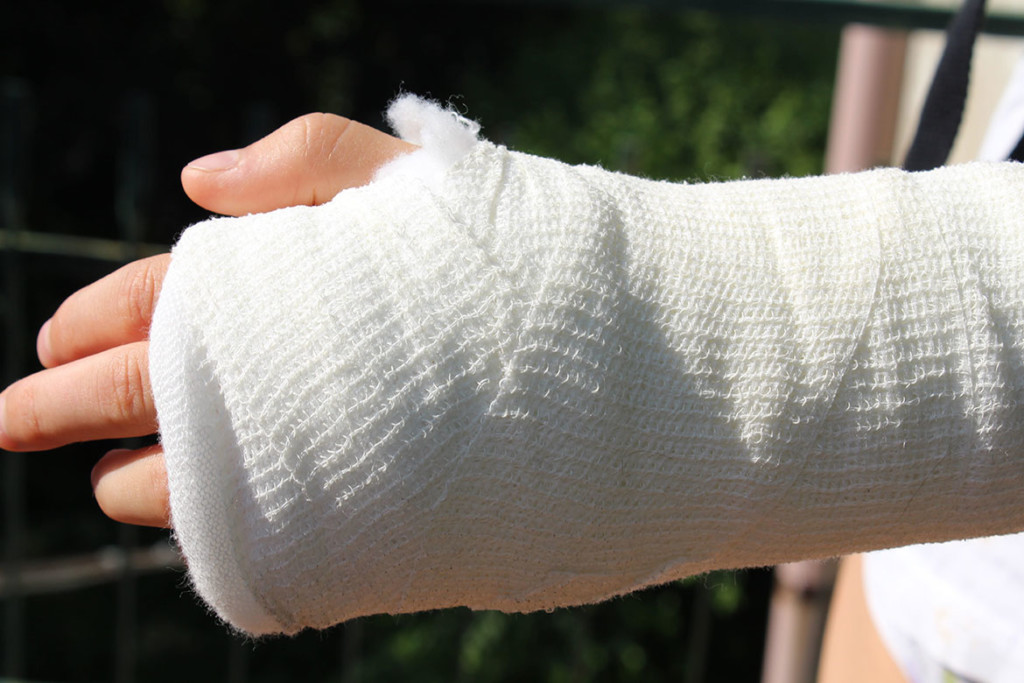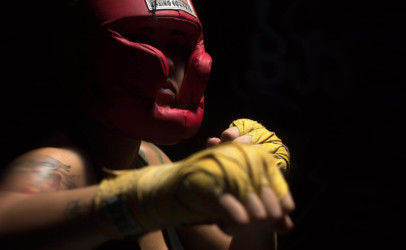You can get injured when practicing any sport, but boxing, in particular, has a very bad reputation. Many believe that a boxing training injury happens very often and everyone is bound to suffer from a broken nose or head injury.
The truth is that yes, injuries in boxing can occur, but if you take the necessary precautions, you are at no more risk than in any other sport or fitness regime. This is why we decided to give you today 10 tips to prevent boxing training injuries and avoid getting hurt.
Common injuries in boxing
Some of the most common injuries in boxing are cuts and bruises to the face, fingers and hands from contact with an opponent’s gloves or head. Black eyes and bruised noses are also very frequent.
Those fighters that do not wear headgear, mostly professional boxers, are more likely to receive injuries in this part of their bodies, so be sure to wear it yourself if you are sparring and do not want to get hurt or cut.
You can also have sprains and strains to extremities and torso in boxing. Sprains occur when the ligaments, which connect the bones to other bones, tear. They occur more commonly in ankles and wrists. Strains, on the other hand, are injuries to a muscle or tendon and are more common in the back, biceps and elbows.
Concussions are also common in any contact sport, as well as in boxing. They can happen from a heavy blow or impact to the head and some of the symptoms are nausea, unconsciousness, confusion, brief loss of short-term memory, headaches and loss of coordination.
Nose, hand, jaw and rib fractures are other injuries that often occur in boxing. There is also an injury that is called a “boxer’s fracture” that involves the breaking of the metacarpal bones.
Finally, shoulder dislocation can also occur from an improper or exaggerated punch motion and surgery is sometimes necessary.

Injuries to the wrists from boxing training
Wrist pain can occur from boxing practice but it should not be happening, as your wrists are not supposed to hurt. If they are, you are probably not wrapping your wrists adequately or not aligning your fists with your forearm, as we have told you in an article we published specifically about wrist pain in boxing.
Some of the most common injuries to the wrists are:
- Overuse
This occurs when the muscles, ligaments and tendons of the wrists are not able to adapt to the constant stress of the repeated actions of punching the bag or an opponent. It usually happens when the boxer does not take enough time to recover between training sessions or inadequate wrist support.
- Wrist Osteoarthritis
This is an injury that occurs when the cartilage in the joints starts to break down and you experience pain and soreness. It is probable that you will need to consult a doctor who will most likely prescribe you with medication for the pain.
- Carpal Bossing
This is a very common injury in boxing and what the person will experience is a lump appear on the back of the hand where the long fingers meet the wrist and swelling can also occur.
- Boxer’s Fracture
As we mentioned above, boxer’s fracture is another common injury that can happen in boxing training and can cause wrist pain. What happens is that the boxer breaks his or her long bone that connects the pinkie finger to the wrist when the person hits an object with excessive force without wearing proper padding and support.
All of these injuries can be prevented and we’ll give you some tips that will help you avoid harming your wrists or any other part of your body. Keep reading!

10 tips about how to prevent a boxing training injury
1. Wear appropriate protection
There is protective gear available in boxing for a reason: avoiding injuries. Even if you are just doing light sparring, it is easy to sustain injuries, such as cuts. In boxing, you can (and should) use:
- Head guards: It will prevent injuries to the head. Make sure it is cushioned enough and you can breathe and see with it on.
- Boxing gloves: They depend on how much you weight. According to Mighty Fighter, if you are below 174 pounds your gloves should be at least 14 ounces. Look at some of the best gloves for women here.
- Groin guard: We think this one is self-explanatory.
- Mouth guard: Do not enter the ring without a mouth guard and do not get a cheap one, your teeth will be grateful for it.
- Hand wraps: These are a MUST at all times, they will prevent wrist injuries and pain.
2. Wrap your hands correctly
Use proper techniques for hand wrapping. There are many methods out there, choose one that will ensure you sufficient padding on your knuckles and wrists.
3. Warm-up properly before starting to box
It does not matter if you are a pro or an amateur boxer. You always should warm-up before punching anything, even if you are just doing shadow boxing. This is one of the most important parts of your routine because it prepares your muscles and organs for boxing training. A few weeks ago we gave you 10 great boxing warm-up tips, so go check those out! They will keep you from getting injured. Remember to cool down afterward as well.
4. Moisturize your skin to prevent nose bleeds
Nose bleeds and cuts may occur more when the skin inside the nose is dry and brittle. You can do steam inhalations, apply saline water drops or use natural sprays to keep it always moisturized. Do this before sparring and you will be less vulnerable to nose bleeds.
5. Use correct punching techniques
By learning how to deliver a punch correctly you will minimize damage to the wrists and fingers. Be sure that when you punch your wrist is aligned correctly and that you are aiming for the knuckle of your middle finger to make contact first. Thumb injuries may also occur because of a bad technique and can get fractured.
6. Petroleum jelly for impact places
Applying petroleum jelly on impact places will make your skin slippery and elastic and will reduce the probability of cuts and bruises from punches. A thin coat will do the trick.
7. Conditioning
A well-conditioned boxer will be less likely to get hurt and injured. Therefore, you need to work on improving your fitness level and develop stamina and endurance to help you withstand intense training. In addition, by being properly conditioned to box you will defend yourself better, ergo, not get hit and injured. This includes punching technique, footwork and more.
8. Eat like a boxer
You may wonder what eating and food have to do with injuries in boxing but they are related. To be a strong athlete you need proper nutrition, which will help you maintain good levels of calcium, protein and vitamin D for stronger bones, reducing the risk of fractures.

Remember to also drink enough fluids to keep your body hydrated and, if needed, also replenish the electrolytes lost through sweating. Dehydration equals fatigue and this leads to a higher likelihood of getting a head injury or concussion.
Check out this diet for boxers!
9. As soon as you feel any type of pain, consult a doctor
Do not ignore a pain until it gets really bad. As soon as something begins bothering you, consult a doctor before it gets worse. Getting professional help may prevent a simple pain to escalate to something more serious.
10. Give your body enough time to rest
We say it every time and we’ll keep repeating it how many more times it takes: you need to give your body the proper time to rest. It is fine if you want to train hard and push yourself to the limit, but if it is causing you pain, perhaps you need to slow down. Also, if a doctor tells you to rest so that you can heal from an injury, you need to listen to the expert’s advice.
Extra tips for preventing injuries in boxing
We thought that only ten tips for preventing injuries in boxing were not enough so here are a few more extra tips that we are sure will come in handy:
- Use ice to cool your muscles down after sparring or working out at the boxing gym. It will decrease inflammation and soreness and aid in healing, which will prevent further injuries.
- Do not forget to stretch before and after a boxing training session to prevent muscle strains.
- Work on your defense to avoid getting injured by an opponent.
- Use your common sense regarding taking the necessary safety measures and listening to your body. There are several chronic injuries that can be prevented from happening if you identify quickly that you are feeling pain when you are not supposed to and getting the treatment you need.
Have you ever had an injury from boxing? Why do you think it happened and what are you doing today to prevent it from repeating? Tell us about your experience in the comments below!





